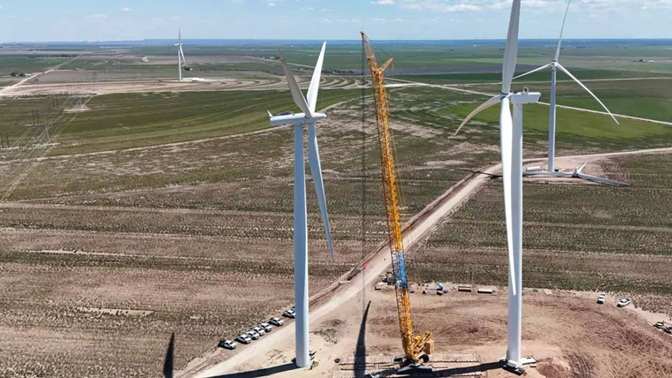The U.S. wind power industry has been gaining momentum in recent years, providing a cleaner, more sustainable energy alternative. However, a new report by Wood Mackenzie suggests that Donald Trump’s proposed tariffs and import restrictions could put the brakes on this progress, leading to increased costs and potential slowdowns in the industry.

Trump’s trade policies include a 25% tariff on imports from Mexico and Canada and a 10% tariff on Chinese imports. According to Wood Mackenzie’s report, titled “Trade War Hits U.S. Onshore Wind Power,” these tariffs could drive up the price of wind turbines by 7% and increase overall project costs by 5% under the current U.S. supply chain structure.
If tariffs were applied across all imports at 25%, the impact would be even greater, with turbine costs rising by 10% and total project costs increasing by 7%. This could make some wind projects financially unviable and threaten the industry’s growth.
The wind power sector heavily depends on imported components like blades, drivetrains, and electrical systems. In 2023 alone, the U.S. imported $1.7 billion worth of wind-related equipment, with 41% coming from Mexico, Canada, and China. The proposed tariffs would raise costs across the board, affecting both developers and consumers.
The report warns that the higher costs would also impact the levelized cost of energy (LCOE)—a key measure of how affordable wind power is compared to other energy sources. In the short term, LCOE for U.S. onshore wind could rise by 4%, while universal 25% tariffs could push it up 7%. Since wind is currently one of the cheapest energy sources, these increases would raise electricity prices for consumers and reduce the competitiveness of renewable energy against fossil fuels.
A Familiar Battle for the Wind Industry
Tariffs aren’t a new challenge for wind energy. The industry faced similar obstacles during Trump’s first term, but looser monetary policies at the time softened the impact. Now, wind energy stakeholders are waiting for clarity on how the tariffs will be implemented and assessing the potential damage.
Endri Lico, a principal analyst at Wood Mackenzie, explained:
“Protectionist policies will push capital costs higher for wind projects. Wind peers await the specialization of the tariff legislation to fully assess the impact.”
How the Industry Plans to Fight Back
Rather than accepting these cost increases, wind manufacturers are already exploring ways to adapt. Some potential strategies include:
- Rerouting and restructuring supply chains to bypass tariff-heavy import routes.
- Strengthening domestic manufacturing to reduce reliance on foreign parts.
- Raising turbine prices to offset higher costs.
- Exploring policy incentives to counterbalance tariff effects.
While some of these changes could help limit the damage, consumers will likely bear some of the burden through higher energy prices.
The U.S. has been making major strides in renewable energy adoption, and wind power is a crucial part of the equation. But if Trump’s trade policies increase costs significantly, the transition to clean energy could slow down, putting more financial strain on businesses and consumers alike.
At a time when global efforts to combat climate change require urgent action, the U.S. wind industry is facing a new hurdle that could shape its future. Whether manufacturers can adapt quickly enough—and whether policymakers will step in to mitigate the effects—remains to be seen. For now, one thing is clear: Trump’s tariffs could send strong headwinds into the sails of U.S. wind power.
Related Post
